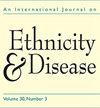Generation 1.5: Years in the United States and Other Factors Affecting Smoking Behaviors Among Asian Americans.
IF 1.7
3区 医学
Q1 PUBLIC, ENVIRONMENTAL & OCCUPATIONAL HEALTH
引用次数: 1
Abstract
Introduction Generation 1.5, immigrants who moved to a different country before adulthood, are hypothesized to have unique cognitive and behavioral patterns. We examined the possible differences in cigarette smoking between Asian subpopulations who arrived in the United States at different life stages. Methods Using the Asian subsample of the 2015 Tobacco Use Supplement to the Current Population Survey, we tested this Generation 1.5 hypothesis with their smoking behavior. This dataset was chosen because its large sample size allowed for a national-level analysis of the Asian subsamples by sex, while other national datasets might not have adequate sample sizes for analysis of these subpopulations. The outcome variable was defined as whether the survey respondent had ever smoked 100 cigarettes or more, with the key independent variable operationalized as whether the respondent was: 1) born in the United States; 2) entered the United States before 12; 3) entered between 12 and 19; and 4) entered after 19. Logistic regressions were run to examine the associations with covariates including the respondent's age, educational attainment, and household income. Results Asian men who entered before 12 were less likely to have ever smoked 100 cigarettes than those who immigrated after 19; for Asian women, three groups (born in the United States, entered before 12, entered between 12 and 19) were more likely to have smoked 100 cigarettes than those who immigrated after 19. Conclusions While Asian men who came to the United States before 12 were less at risk for cigarette smoking than those who immigrated in adulthood, the pattern was the opposite among Asian women. Those who spent their childhood in the United States were more likely to smoke than those who came to the United States in adulthood. These patterns might result from the cultural differences between US and Asian countries, and bear policy relevance for the tobacco control efforts among Asian Americans.第1.5代:亚裔美国人在美国的年龄和影响吸烟行为的其他因素。
第1.5代,即在成年前移居到另一个国家的移民,被认为具有独特的认知和行为模式。我们研究了在不同人生阶段到达美国的亚洲亚人群在吸烟方面可能存在的差异。方法利用2015年当前人口调查烟草使用补充资料中的亚洲亚样本,用他们的吸烟行为来检验这一1.5代假设。之所以选择这个数据集,是因为它的大样本量允许按性别对亚洲亚样本进行国家级分析,而其他国家数据集可能没有足够的样本量来分析这些亚人群。结果变量定义为被调查者是否曾经吸过100支或更多的香烟,关键的自变量被操作为被调查者是否:1)出生在美国;2) 12日前入境美国;3) 12岁至19岁;19岁以后进入大学。运用逻辑回归来检验与协变量的关联,包括受访者的年龄、受教育程度和家庭收入。结果12岁之前移民的亚裔男性比19岁之后移民的亚裔男性吸过100支烟的可能性要小;对于亚洲女性来说,三个群体(出生在美国、12岁之前移民、12岁至19岁之间移民)比19岁以后移民的女性更有可能抽100支烟。结论:12岁以前来美国的亚裔男性吸烟的风险低于成年后移民的男性,而亚裔女性的情况则相反。那些在美国度过童年的人比那些成年后来到美国的人更有可能吸烟。这些模式可能是由美国和亚洲国家之间的文化差异造成的,并与亚裔美国人的烟草控制努力具有政策相关性。
本文章由计算机程序翻译,如有差异,请以英文原文为准。
求助全文
约1分钟内获得全文
求助全文
来源期刊

Ethnicity & Disease
医学-公共卫生、环境卫生与职业卫生
CiteScore
6.30
自引率
0.00%
发文量
43
审稿时长
6-12 weeks
期刊介绍:
Ethnicity & Disease is an international journal that exclusively publishes information on the causal and associative relationships in the etiology of common illnesses through the study of ethnic patterns of disease. Topics focus on: ethnic differentials in disease rates;impact of migration on health status; social and ethnic factors related to health care access and health; and metabolic epidemiology. A major priority of the journal is to provide a forum for exchange between the United States and the developing countries of Europe, Africa, Asia, and Latin America.
 求助内容:
求助内容: 应助结果提醒方式:
应助结果提醒方式:


